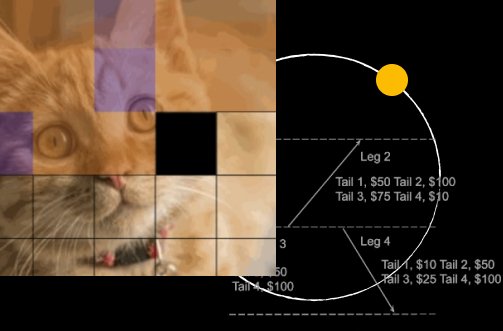Quantum transduction and networking for scalable computing applications
Overview
As Google has demonstrated at a global scale, distributing computing resources in a modular fashion offers immense benefits over monolithic computing architectures, including robustness, cost, and performance. This is true at scales ranging from networks within a single computing facility to sharing information across continents. In order to reach maximum potential, quantum technology, such as the superconducting qubit platforms being developed by Google Quantum AI, will eventually need to operate in a distributed fashion. Within data centers, this has the ability to increase modularity and robustness in design, and decrease requirements for control wiring and cryogenics dramatically. In addition, quantum technology is expected to uniquely benefit from the ability to transmit quantum data collected from the world directly into a quantum computer for processing, in order to learn from quantum data or discover fundamentally new facets of our universe. We expect substantial developments in this area to impact both the design of near-term experiments and future architectures for the Google quantum device.
However, developing the required technologies at the quantum scale poses unique challenges as well. For example, high fidelity transfer of information between storage and computing media like superconducting qubits and transmission media like optical photons, a process also known as transduction, is underdeveloped. Given the potential benefits, we believe it is critical to support research enabling the transfer of quantum information between superconducting qubits and transmission media like optical or flying microwave qubits. This effort must be supported by the development of compelling applications for distributed quantum systems beyond parallel compute and quantum key distribution, which could fundamentally alter the trajectory of quantum technology.
Application status
Applications are currently closed.
Decisions for the June 2024 application will be announced via email by October 2024. Please check back in Summer 2025 for details on future application cycles.
-
Applications open
-
Applications close
-
Notification of proposal decisions
Research topics
Proposals should specifically cover one or more of the following topics:
- Transduction of superconducting qubits to quantum transmission media, such as flying microwave qubits, optical qubits, etc.
- Direct transduction of alternative sensing or computing platforms, e.g., neutral atom arrays or defects in diamond, to superconducting qubits.
- End-to-end scientific or industrial application development for two or more parties linked via a quantum channel, each with the equivalent of fewer than 50 logical qubits. The application domain should differ from simple distributed compute or quantum key distribution.
- Application development of truly multi-qubit quantum sensors linked to a quantum computer via transduction, with a focus on exponential speedups in quantum learning about the physical world.
- Combination of advanced quantum sensors with quantum computation to achieve speedup in novel learning or sensing tasks.
Award details
Award amounts vary by topic up to $150K USD, and are intended to support the advancement of the professor’s research during the academic year in which the award is provided. However, we can consider larger grants for exceptional experimental proposals that demonstrate a clear and compelling rationale for the increased funding.
Funds will be disbursed as unrestricted gifts to the university and are not intended for overhead or indirect costs.
Requirements
Eligibility
- Open to professors (assistant, associate, etc.) at a university or degree-granting research institution.
- Applicants may only serve as Principal Investigator (PI) or co-PI on one proposal per round. There can be a maximum of 2 PIs per proposal.
- Proposals must be related to computing or technology.
Proposals should consider the guidance outlined in our FAQ section.
Review criteria
- Faculty merit: Faculty is accomplished in research, community engagement, and open source contributions, with potential to contribute to responsible innovation.
- Research merit: Faculty's proposed research is aligned with Google Research interests, innovative, and likely to have a significant impact on the field.
- Proposal quality: The research proposal is clear, focused, and well-organized, and it demonstrates the team's ability to successfully execute the research and achieve a significant impact.
- AI Ethics principles: The research proposal strongly aligns with Google's AI Principles.
FAQs
Listed on GARA landing page.
